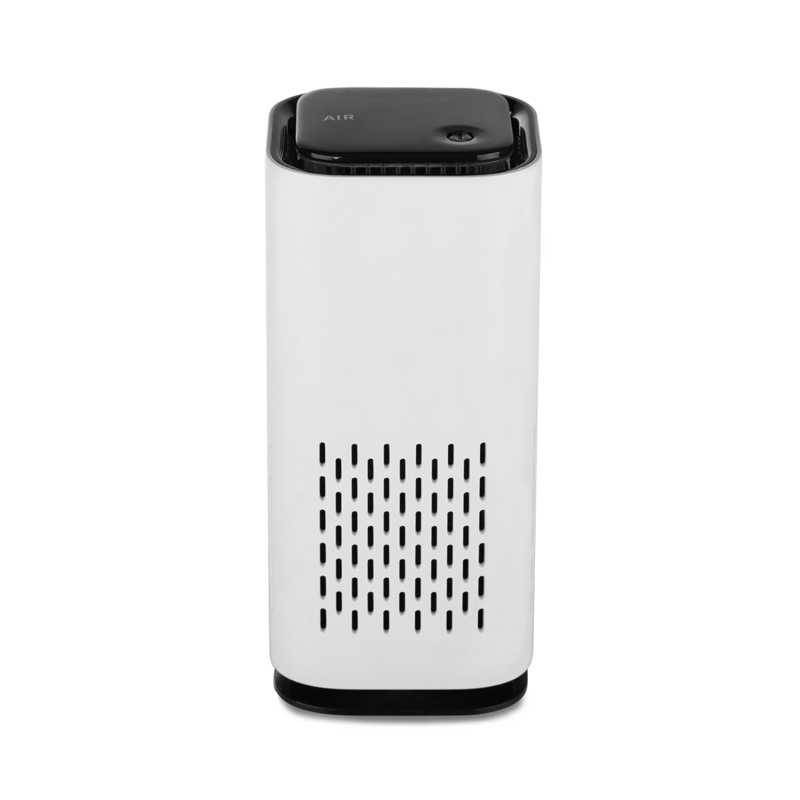CREATIVITY CHANGES YOUR LIFE
 Tel: +86 0755-84870739
Tel: +86 0755-84870739
 Email: info@nexhc.com
Email: info@nexhc.com
CREATIVITY CHANGES YOUR LIFE
 Tel: +86 0755-84870739
Tel: +86 0755-84870739
 Email: info@nexhc.com
Email: info@nexhc.com
Company news | Industry news | Exhibitions and events | Optimization dedicated | aromatherapy diffuser |
source:Air purifier Merchant release time:2021-10-16 Hits: Popular:aromatherapy diffuser direct sales

6. Photocatalyst
Photocatalyst, also known as Lightcatalyst, is a type of semiconductor material represented by titanium dioxide (TiO2), which does not change by itself under the irradiation of light, but can promote chemical reactions, and is a general term for semiconductor materials with catalytic function. Under the irradiation of a light source, it can use the energy of a specific wavelength light source to produce a catalytic effect (redox reaction), so that the surrounding oxygen and water molecules are excited into active OH^- and O^2- and other free ion groups, these free radicals Almost all organic substances and some inorganic substances that are harmful to the human body or the environment can be decomposed.
7. Formaldehyde scavenger
High-end bio-engineering technology from Europe, based on the principle of formaldehyde absorption by certain plants, extracts essence from dozens of natural plants, adds active ingredients and is refined by a special process; this product is an aqueous liquid, colorless, odorless, and odorless. No volatility (except moisture), it can actively capture free formaldehyde and form a stable solid substance. Once used, the effect is rapid and long-lasting.
8. Ozone (active oxygen technology)
The thick layer of gaseous ozone is bluish with a special smell, and when the concentration is high, it smells like chlorine; liquid ozone is dark blue, and solid ozone is purple-black.
9. Ultraviolet rays
Ultraviolet rays are the general term for radiation with wavelengths ranging from 0.01 to 0.40 microns in the electromagnetic spectrum, and cannot cause people's vision. In the electromagnetic spectrum, the wavelength is 0.01~0.04 micron radiation, which is the radiation from the violet end of the visible light to the X-ray.
Ultraviolet rays with a wavelength of 200 to 290 nm can penetrate the cell membranes of bacteria and viruses, damage nucleic acid (DNA), and make cells lose the ability to reproduce, achieving a rapid sterilization effect. Short-wavelength ultraviolet light with a wavelength below 200nm can decompose O2 molecules, and the generated O* combines with O2 to produce ozone O3. Ultraviolet rays and ozone have a strong ability to oxidize and decompose organic molecules including malodors, and the synergistic effect of the combined use of UV/O3 exerts a powerful force in air purification treatment.
Read recommendations:
How to use the air purifier!air humidifier Merchant
NextThe harm of air to human body!Air purifier Processor
Popular recommendation
A5 Aroma Diffuser
2021-09-14A9 Aroma Diffuser
2021-09-14F07 Cooling Fan
2021-09-14A19 Aroma Diffuser
2021-09-14J6 mini humidifier Air Humidifier
2021-09-14How often does the filter element of the air purifier change?
2021-10-13Are air purifiers important?air humidifier price
2022-07-07Precautions when using different fragrance types.aroma diffuser
2022-04-13The principle of high-energy ion air purification!Air purifier price
2021-10-22How a diffuser works
2022-05-14Does the humidifier emit radiation
2024-09-28Is using a humidifier at home harmful to the body?
2024-09-09How long does a dehumidifier usually run per day?
2024-09-09Humidifier classification
2024-08-24Humidifiers nourish daily life
2024-08-17Common classification methods for humidifiers
2024-08-10How to dehumidify with a dehumidifier
2024-07-22Working process of dehumidifier
2024-07-22High pressure micro fog humidifier for air conditioning unit
2024-07-13What are the possible reasons why humidifiers do not produce fog
2024-07-08Contact the following for inquiries regarding our services and products.
